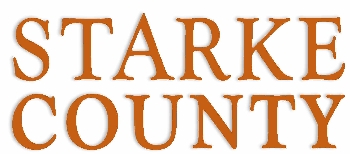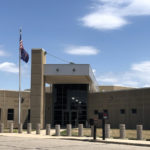 Data from the Starke County Health Department indicates that from 2009-2013 an average of 9 community members died each year as a result of an overdose. The average overdose deaths from 2014-2015 was 4, a substantial decrease. As of July 19, 2016 there have been two deaths in Starke County this year linked to overdoses. Moving Starke County Forward (MSCF), a local non-profit organization dedicated to improving the health of Starke County, said these deaths include accidental overdoses on pharmaceuticals as well as illegal narcotics.
Data from the Starke County Health Department indicates that from 2009-2013 an average of 9 community members died each year as a result of an overdose. The average overdose deaths from 2014-2015 was 4, a substantial decrease. As of July 19, 2016 there have been two deaths in Starke County this year linked to overdoses. Moving Starke County Forward (MSCF), a local non-profit organization dedicated to improving the health of Starke County, said these deaths include accidental overdoses on pharmaceuticals as well as illegal narcotics.
Exactly what happened in 2014 to significantly reduce overdose deaths can be complicated to specify, however a few important events worth mentioning include Senate Enrolled Act 227 effective in March 2014, providing immunity for first responders to utilize naloxone (Narcan). Naloxone is a medication that counteracts the effects of an opioid drug overdose (including heroin).
County Health Rankings and Roadmaps (CHRR), A Robert Wood Johnson Foundation program, “What Works for Health” listed Naloxone access as proven effective at reducing overdose deaths and impacting health rankings. According to CHRR, “ ‘What Works for Health’provides communities with information to help select and implement evidence-informed policies, programs, and system changes that will improve the variety of factors we know affect health.” MSCF encourages community members and leaders to embrace evidence-informed policies and become active in leading healthy lives.
Also in 2014, HEA 1006 went into effect revising the Indiana criminal code and establishing the Mental Health and Addictions Forensic Treatment Services Program providing funding for mental health, addiction, and cognitive behavior treatment programs for persons who are on probation, supervised by a community corrections program, participating in a court administered program, or participating in a diversion program.
In 2015 legislation establishing the Justice Reinvestment Advisory Council (JRAC) went into effect. The 2015 JRAC Annual Report explains “The goal of the Justice Reinvestment Advisory Council is to develop incarceration alternatives and recidivism reduction programs at the county and community level by promoting the development of probation services, problem solving courts, mental health treatment, substance abuse treatment, programs providing for court supervision, probation, or pretrial diversion, community corrections, evidence based recidivism reduction programs for currently incarcerated persons, and other alternatives to incarceration.”
Other pieces of legislation have been implemented increasing accountability including House Enrolled Act 1465 which “improves the effectiveness of the Indiana Scheduled Prescription Electronic Collecting & Tracking program (INSPECT), the state’s prescription drug monitoring program. INSPECT maintains a database of controlled substances dispensed by pharmacies, and physician can access the program to verify they are not overprescribing to an addicted patient who might be drug-seeking” as summarized by BitterPill.in.gov.
Data from the Indiana State Department of Health, Epidemiology Resource Center, ranks Starke County 4th highest in the state when it comes to the Drug Poisoning Death Rate from 2011-2014, with Scott county ranking 1st, followed by Decatur and La Porte. Neighboring county Pulaski ranks 20th, Porter at 27th, St. Joseph at 47th, and Marshall at 63rd.
From 2010-2014 Starke County ranked 18th out of 90 in Non-Fatal Emergency Department Visits due to Opioid Overdoses in terms of the crude rate per 100,000 people. Neighboring county Pulaski ranked 5th, La Porte at 17th, St. Joseph at 23rd, Porter at 37th, and Marshall ranked 45th.
MSCF releases this information in preparation for the upcoming Overdose Awareness event which is scheduled for Sunday, August 28, 2016 starting at 6:00pm CT at Wythogan Park in Knox. Community members are invited to attend and celebrate those who have overcome addiction. This is also an opportunity for all who have been affected by overdose to publicly mourn and help the wider community understand that fatal overdose profoundly affects mainstream society. Activities include recovery speakers, education on overdose, naloxone training information, candlelight vigil, and more.
PROVIDED BY JORDAN MORRIS














